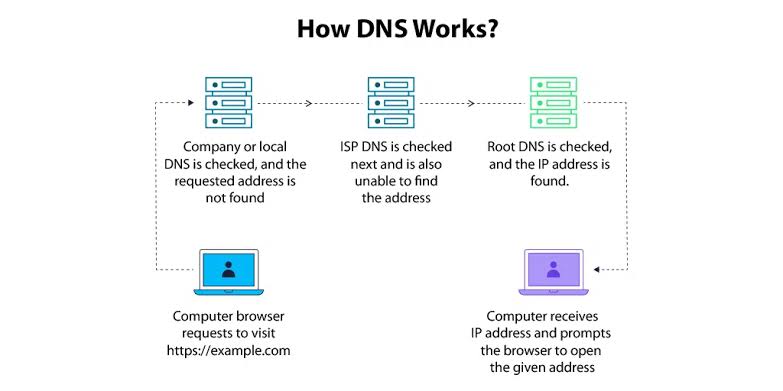
How DNS Works: The Backbone of the Internet Explained
Created on 6 November, 2024 • Technolgy • 25 views • 2 minutes read
Imagine if you had to memorize the IP addresses of every website you visit, like 142.250.72.238 for Google. That would be exhausting, right? Thankfully, the Domain Name System (DNS) exists to make our online lives simpler.
What is DNS?
DNS is often called the "phonebook of the internet." Just as you use names to call your contacts, DNS helps convert human-friendly domain names like example.com into the IP addresses that computers use to communicate, such as 192.0.2.1. This process happens in milliseconds and is essential for the seamless browsing experience we all enjoy.
How DNS Works: Step-by-Step Breakdown
Let’s walk through the process that occurs every time you type a URL into your browser:
1. You Enter a URL: When you type www.example.com in your browser, it doesn't know where to go until DNS gets involved.
2. DNS Query Sent: Your browser sends a request to a DNS resolver (often managed by your internet service provider) to find the IP address of example.com.
3. Checking the Cache: The DNS resolver first checks its cache to see if it already has the IP address. If it does, it sends this information back to your browser.
4. Query to Root DNS Server: If the IP address isn’t in the cache, the resolver queries one of the root DNS servers. These servers don’t have IP addresses for websites but direct the resolver to the appropriate top-level domain (TLD) server, like .com or .org.
5. Finding the TLD Server: The resolver asks the TLD server for the domain’s information. In our case, the .com server would be queried.
6. Contacting the Authoritative DNS Server: The TLD server then directs the resolver to the authoritative DNS server for example.com. This server has the final answer: the IP address.
7. Returning the IP Address: The resolver sends the IP address back to your browser, which can now load www.example.com.
All this happens in a split second, and your browser connects to the website effortlessly!
Key Components of DNS
1. DNS Resolver: The "middleman" that handles the initial request and gathers the necessary information.
2. Root Name Server: The first step in the DNS lookup, pointing to the TLD servers.
3. TLD Server: Manages domain extensions like .com, .net, or .org and directs requests to the authoritative DNS servers.
4. Authoritative DNS Server: Holds the actual IP address for the domain, providing the final answer to the DNS resolver.
Why is DNS So Important?
User-Friendly Browsing: Without DNS, the internet would be difficult to navigate, as we’d need to memorize numerical IP addresses.
Internet Performance: DNS caching improves the speed of your internet experience. When your resolver caches DNS records, future visits to the same site are faster.
Security Considerations: DNS isn’t just about convenience. It’s also a battleground for cybersecurity. Technologies like DNSSEC (Domain Name System Security Extensions) help protect against attacks like DNS spoofing.
DNS in Everyday Life
Streaming Videos: Ever wondered why Netflix loads so quickly? DNS caching ensures that frequently visited services can be accessed with minimal delay.
Smart Home Devices: From your Alexa to your smart fridge, all these devices rely on DNS to communicate with servers and function properly.
Fun Fact
The DNS root servers are spread worldwide and managed by different organizations, ensuring that DNS remains resilient and secure.
Popular posts
-
Coin Master free spins & coins daily links January 2023Games • 2,832 views
-
AI in Healthcare: Advancements and ChallengesTechnolgy • 1,630 views
-
7 Simple Steps to Rank Number 1 in Google SearchTechnolgy • 1,313 views
-
E-commerce EvolutionTechnolgy • 1,000 views
-